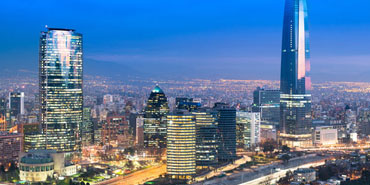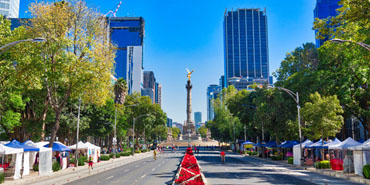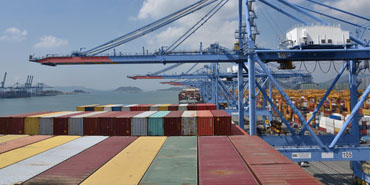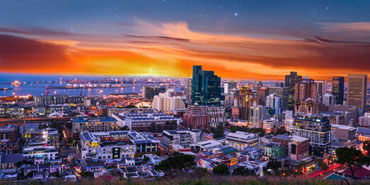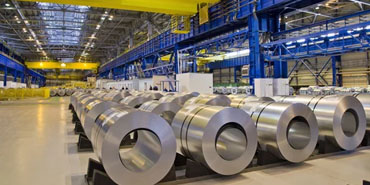India is the world’s second most populated country, with a population of close to 1.38 billion people. To put it into perspective, that is almost four times the population of the United States. Have a look at the image below… it shows the countries whose population could fit in particular states of India - that’s how large India is in terms of population.

India has an average age of just over 28 years, one of the youngest average ages in the world. Indian middle class is the heart of this population, the largest and the river of economic growth.
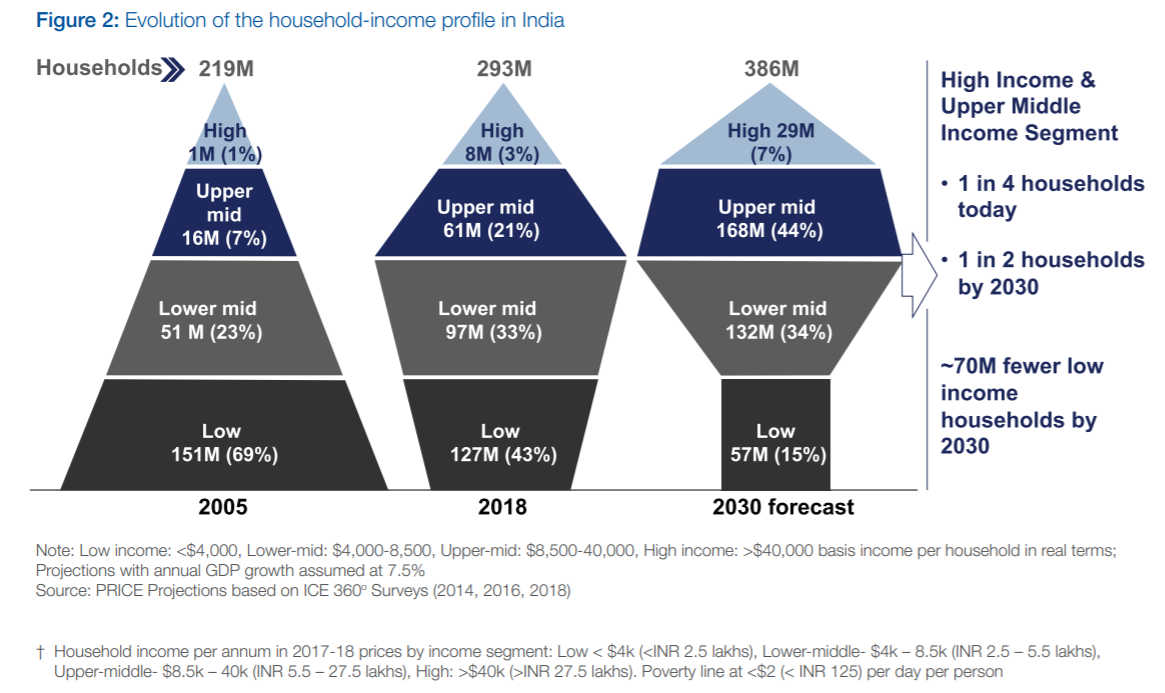
According to a World Economic Forum report, by the next decade we expect the Indian middle class to be 78% of India’s population as compared to 54% in 2018. Indian middle class would drive nearly 80% of consumption.
By 2030 the middle class will spend an additional $3.6 trillion on consumption. That is a straight expansion of more than India’s current GDP. Nearly $2 trillion of incremental spending will be on getting more of the same products and services.
What this means for investors is an opportunity to invest in daily need company products like FMCG, consumer durables, etc. which have a very long runway of growth.
The remaining consumers upgrading to packaged, branded or higher priced offerings will lead to $1.6 trillion or adding new products or services to their consumption routine. Consumers would prefer to upgrade or expand their choices in apparel, personal care, and food and beverages. India’s income growth will lead to an enormous opportunity for packaged and branded offerings. Well-placed brands in clothing retail & manufacturing, food & beverage, and personal care FMCG can gain a lot.
Let me explain this through an example. Let’s assume the current size of a personal care market is $100mn. You as an investor invested in company A, a market leader with a 30% market share, making it a $30mn company. Now the market itself is going to become more than $500 million markets in the coming decade. If the company you invested in just holds its market share it would be a $150 million company. You chose to invest in a company that expands its market share in the increasing market size, meaning you have gotten an above-average wealth-creator company share.
We have looked at numbers - now let’s look at why the middle class would be at the forefront of all the consumption and, indirectly, the GDP growth of the country. There are four contributions that the middle class makes to economic growth. First, the middle class is a brilliant entrepreneur. They often claim that small businesses and family farms were the heart of the middle class that made America great. Second, the middle class in India saves the most. More savings drives their willingness to invest in human capital and a higher appetite to consume. Third, the people who had little or no access to the internet are now using it all day at the lowest cost in the world. This makes them more aware of brands and entices them to consume more through eCommerce & social media.
The fourth is that a lot of India still does not have big-ticket items. The expanding demand for cars, motorcycles, televisions, air conditioners, mobile phones, and refrigerators is already leading to an acceleration in manufacturing in India. The middle class would also demand housing, shopping malls, and other infrastructure, and can afford to take an annual vacation, boosting domestic tourism.
The middle class saves for every need like retirement, housing, and children’s education, providing the resources for fixed capital formation on their own. Little support from the government makes them used to being responsible for their own needs. The culture in middle-class India is to save every penny and use it wisely, which leaves a lot of room for consumption-led booms.
There are many reasons to be optimistic about India’s future growth, led by the ever-rising middle class, youngest average age, and the next wave of globalization. The middle class is always better-educated, enterprising, innovative. Unlike traditional models of export-led growth based on manufacturing, India has already marched ahead with services-led growth, as technological progress has made services more tradable.
India could emerge with a middle class that is proportionately as large as that of the US today. Empirical evidence based on India’s household surveys, changing demographics, and favorable trends in urbanization shows that a massive shift towards a middle-class society is already happening. The precise numbers could change and are less relevant than the trends - and those seem to be strong at present.






